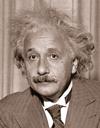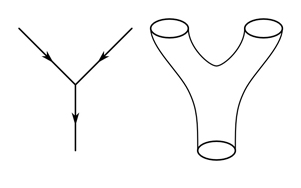GUT: the answer to the physical world

The 19th and early-20th centuries brought explosive achievements in all disciplines of science. But now, the struggle is to unify all the brilliant theories of the universe into one single, manageable theory – the Grand Unification Theory (GUT), which would not only change physics but potentially every aspect of the world we live in. Einstein spent the second half of his life vainly trying to solve this conundrum. Can anyone achieve it, asks Keith Connolly?
At the turn of the 20th Century, an eminent chemist announced his belief that science had made its most dramatic discoveries – little else could be contributed to the field that could be as unique as that which had passed before. Indeed the 19th Century had been an explosive era for scientific change, with achievements in most of the major branches of the discipline. However, it was the introduction of whole new fields of study that was most celebrated.
Scientific fields such as palaeontology absorbed huge intellects throughout the century, as intense discoveries were made and ever-more expansive theories introduced. The period's advancement was of a revolutionary pace – when this pace reduced, scientists began to feel that they had come to an impasse in which new discoveries would be far more difficult. It was in this transitional climate that voices began to claim that extreme scientific discovery had come to an end.
It is easy with hindsight to view this as somewhat premature. The marvellous 20th-century explosion of theory, especially in physics, was only a few years away and not one individual in the scientific world could have expected a Swiss patent clerk's series of papers to have been so insightful. Direct from Einstein's theories of relativity, physics became inundated with activity and the other sciences soon flourished.
The last half-century has been a carefully constructed siege-like attempt on the part of the scientific community to unify the several brilliant theories of the universe into one single, manageable theory which incorporates all the answers to the physical world. Einstein himself began the task, though it has changed somewhat since his time. The collective struggle is to locate a Grand Unification Theory (GUT), which would end physics and other scientific fields.
The science behind such a theory is complex to say the least. In broad terms, it involves the coupling of five specific areas of physics: electromagnetism, that silent force behind polar magnetism, the strong and weak nuclear force, gravitational force and the theory of quantum mechanics. Some of the above have already been unified but as yet no theory has merged all five into one single dramatic coupling. Physicists today are working at length to locate a workable theory and the race is somewhat clogged with participants. But one cannot deny the connotations. To wrap up the entire physical world within a single grand theory could lead to improvements in science on an unimaginable scale. Not least of which would be advancements in propulsion which is the single largest impediment to significant space travel.
 There is only one theory which has been developed that shows any signs of bearing results. Super string theory is the most dynamic and ferociously complex form of fundamental physics in existence. Demanding an inhuman level of math control, it is the GUT physicist's most potent arsenal for the location of the single theory and enlists only the most competent of mathematicians. Unfortunately, it has proved to be more complex than was originally hoped.
There is only one theory which has been developed that shows any signs of bearing results. Super string theory is the most dynamic and ferociously complex form of fundamental physics in existence. Demanding an inhuman level of math control, it is the GUT physicist's most potent arsenal for the location of the single theory and enlists only the most competent of mathematicians. Unfortunately, it has proved to be more complex than was originally hoped.
At its most basic, string theory works within the confines of dimensioned space. We would commonly be aware of the standard three dimensions associated with our physical world – string theory extends this simple analysis by supposing up to 12 different dimensions. One can imagine the complexity of attempts to highlight a mathematical theory with a four-fold increase in its physical properties.
It is not just physics that would be irreversibly changed by the discovery of GUT. All forms of scientific endeavour would bear dramatic and fundamental reconstitution as our understanding of how the physical world works became much clearer. It is not inconceivable that society itself could undergo its own transformation in view of the extent of knowledge which would come into play. One pivotal section, religion, would likely be an area of extensive restructuring.
All of which leads to the question: how likely is it that scientists will discover the grand unification theory? Einstein, possibly the most formidable intellect this earth has yet produced, spent the second half of his life attempting to locate this one principle (in a less complex fashion,as certain forces described above had not been fully introduced); and even he came to no conclusive grounds. String theory has managed to complicate the issue far more than had been previously thought possible. Science can be a finicky discipline and most dramatic leaps have occurred when one person evolves a brilliant theory in a moment of utter genius and propels their field forwards. It may be some time before GUT arrives at that singular individual. But if it does, there is no doubt that the world as we know it will become a vastly different place.
